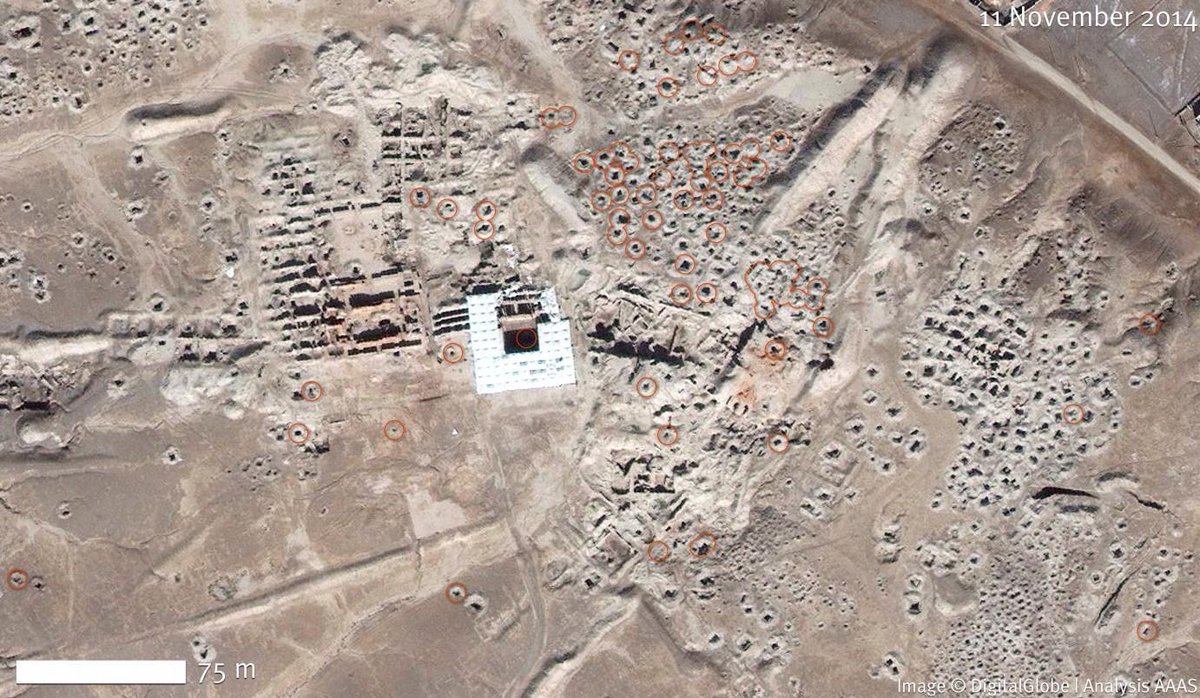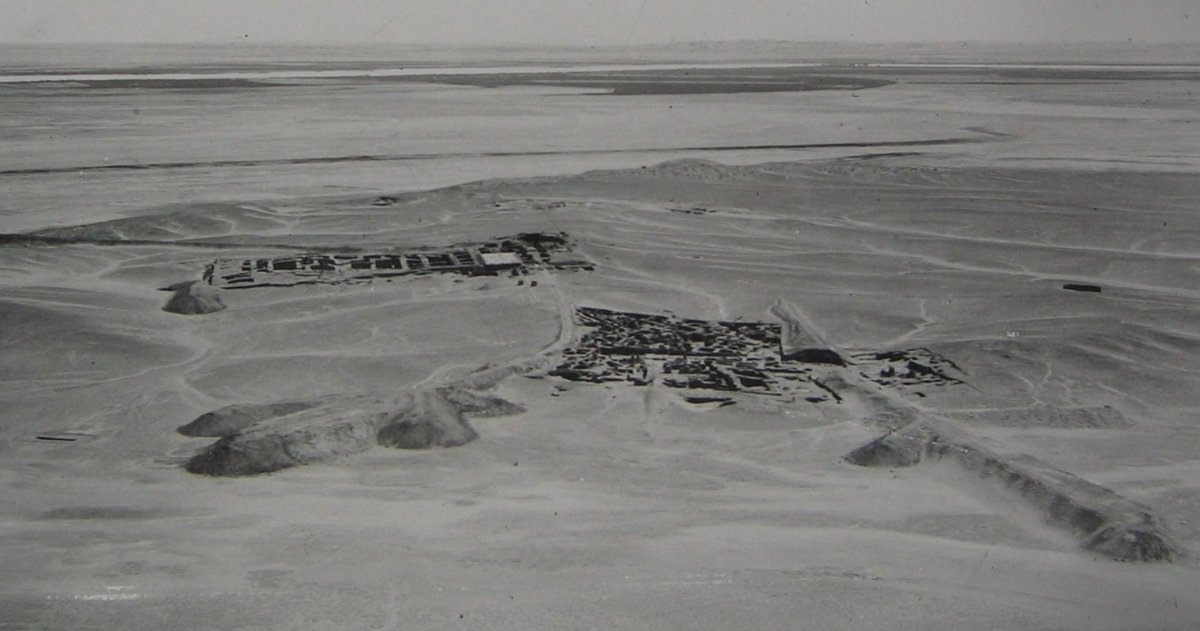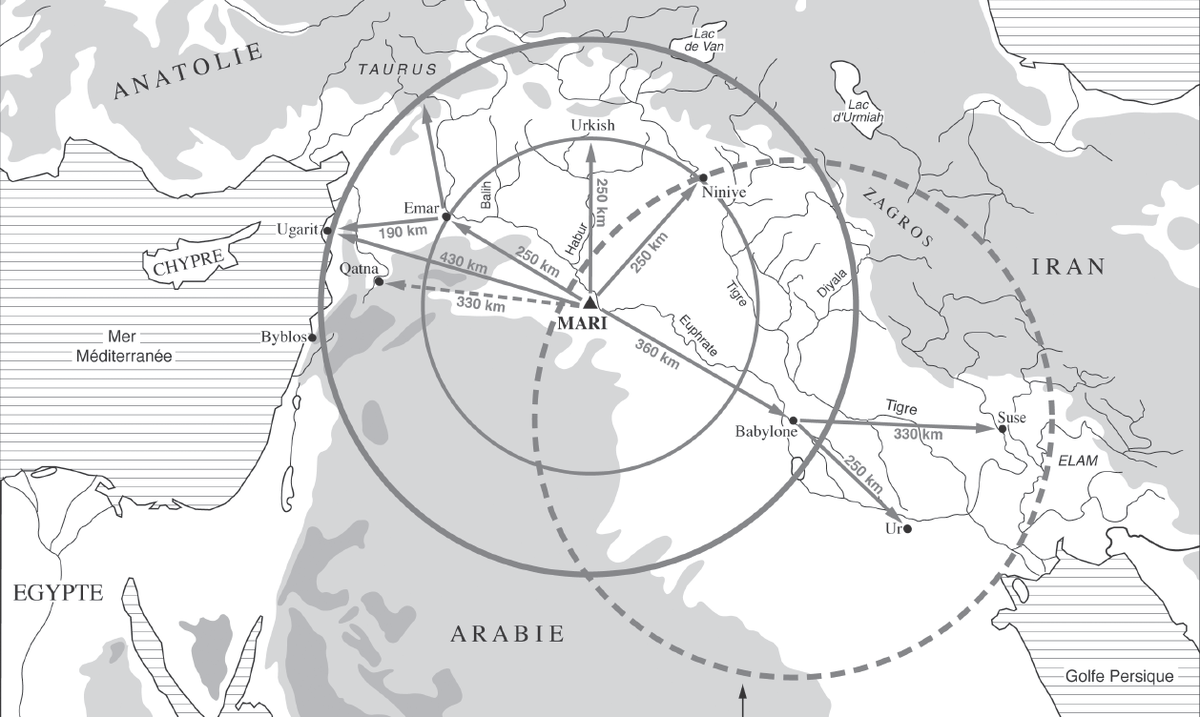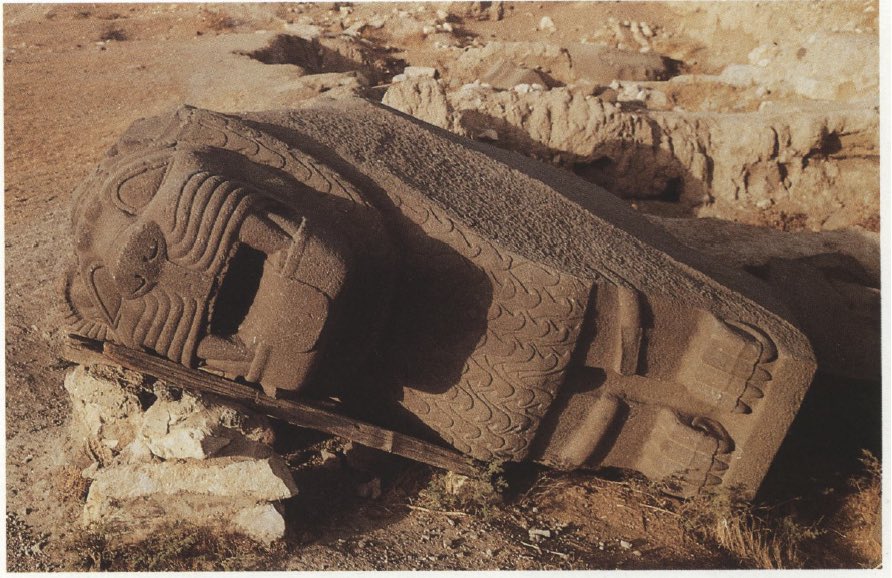
ARCHEO THREAD | TELL HALAF (Part 3): The End of the Early Excavations and the Fate of the Sculptures 

The ravages of WWI extended into the area of Ras al 'Ain, and von Oppenheim detailed how fighters ended up barricading themselves in the Tell Halaf expedition house at some point, leading to its destruction, and also dug trenches on the Tell itself.(1) 

Von Oppenheim did not return to Tell Halaf before the implementation of the French Mandate. In 1927, he visited the site. While indeed the sculptures inside the dig house were safely pulled from the rubble, it was the orthostats left in the courtyard that had been destroyed.(2)
Many of them were turned into mill-stones. Many more were just simply chiseled away. However, von Oppenheim had not only photographed these pieces during the 1911-13 expedition, but he also cleverly made plaster replicas of them, which is how they survive today.(3)
Von Oppenheim was also allowed his share of the finds, which were brought over to Aleppo in a total of 13 railway trucks. Those he had then taken to Alexandretta (Iskanderun) and shipped off to Europe.(4) 

The rest of the artifacts were taken to Aleppo, and for which von Oppenheim organized a small museum.
(The sculptures present at the entrance of the Aleppo Museum are plaster replicas of the originals, which currently are in Berlin).(5)
(The sculptures present at the entrance of the Aleppo Museum are plaster replicas of the originals, which currently are in Berlin).(5)

By 1929, he had also built his Tell Halaf Museum in Berlin at 6 Franklin-strasse in Charlottenberg, Berlin.(6) 

Von Oppenheim's final expedition was in 1929. He records:
"My journey back to Europe was by railway through Aleppo and Constantinople. I rode in the excellent sleeping car [...] What a contrast it was to that life in the desert which lay behind me!"(7)
"My journey back to Europe was by railway through Aleppo and Constantinople. I rode in the excellent sleeping car [...] What a contrast it was to that life in the desert which lay behind me!"(7)
His life took a large turn to the worse by the onset of WWII. He was denied access to dig at Tell Halaf by the French, and had to lie low from Nazi eyes because of his Jewish heritage (even though he was a converted Catholic). He had also lost much of his fortune by then.(8)
History has also not been kind on the small orthostats of Tell Halaf. Even after some of them got destroyed or were lost after the battles in WWI, they were subsequently dispersed across many museums across the world:(9) 

a- The main bulk of orthostats followed the rest of the sculptures to the Tell Halaf Museum in Berlin.(10) 

b- Von Oppenheimm also opted to 'gift' some of them to the Louvre.
c- He took some to New York to sell to interested buyers in 1931. After failing to do so, the works were LEFT IN STORAGE and eventually seized by US authorities and auctioned off to the Met.(11)
c- He took some to New York to sell to interested buyers in 1931. After failing to do so, the works were LEFT IN STORAGE and eventually seized by US authorities and auctioned off to the Met.(11)
d- A few reliefs that had reached Alexandria on their way to Berlin had been confiscated by the British, and now 'reside' in the British Museum.
e- The rest of the small orthostats can be found in the Aleppo Museum
f- Some orthostats still ended up in private collections.(12)
e- The rest of the small orthostats can be found in the Aleppo Museum
f- Some orthostats still ended up in private collections.(12)
The tragedy doesn't end here. During the air raids of WWII in 1943, Oppenheim's museum was bombed. To quell the fires, water was splashed onto the heated basalt sculptures, which caused them to shatter into innumerable pieces. 27,000 basalt sherds were eventually collected.(13) 

After the fall of the Berlin wall in 1989, around 60 sculptures and the shattered sherds were deposited at the Pergamon Museum as part of a loan program.(14) 

This prompted conservators to commence with refitting all the sherds available into the destroyed statues. I can almost call it a miracle, but they succeeded with reviving the long-destroyed statues and orthostats. In 2011, the Pergamon exhibited the reconstructed sculptures.(15) 



Concurrently, a joint Syrian/German team had begun re-excavating at Tell Halaf in 2006, and new findings have allowed us to better understand various periodization and contextual data. Unfortunately, work was halted in 2011 when the Syrian Conflict commenced…(16)
Rayyanne Tabet, a Lebanese artist, ventured to create an exhibition to 'reunite' all the small orthostats. His work was exhibited at the Met and the Louvre. His pencil rubbings of almost all the small orthostats were displayed by the floor, reflecting their original context.(17) 

And he also published his work in this spectacular artist book. Side note: he is the descendant of one of the Maalouf cousins who had worked with von Oppenheim, and are mentioned in his publication.(18) 

I was lucky to see Rayyane's work at the Louvre in 2019 when I visited the temporary exhibition titled "Royaumes Oubliés de l'Empire Hittite aux Araméens". Think of it as the first exhibition to group together the largest number of Syro-Anatolian sculptural art. *jizzfest*(19) 

Many of the other spectacular orthostats and sculptures from Tell Halaf that had recently been conserved were also transported from Berlin to Paris for the exhibition. Looking battered and bruised after having gone through so much, the sculptures still took my breath away.(21) 







To me, it was bitter sweet. There is no happy ending. Them being ripped out of their native soil, dispersed across the continents, destroyed, and revived. It's a hard feeling to explain…(22) 

Stay tuned for Part 4: The Archaeology and History of Tell Halaf and its Sculptures!
A twitter thread is never enough for the juicy details, so if you want to read more, here's where I got my thread info from(Parts 1-2-3):(23)
A twitter thread is never enough for the juicy details, so if you want to read more, here's where I got my thread info from(Parts 1-2-3):(23)

• • •
Missing some Tweet in this thread? You can try to
force a refresh














